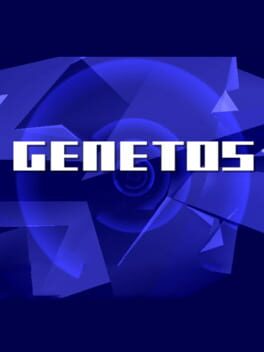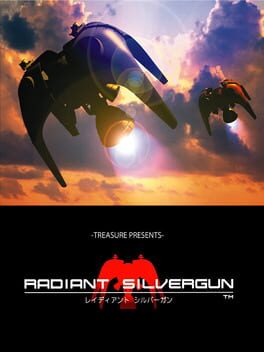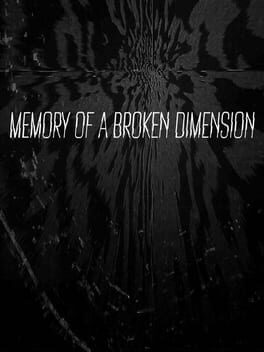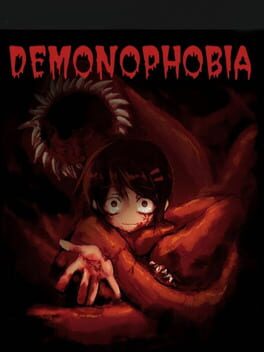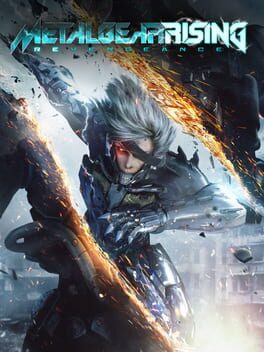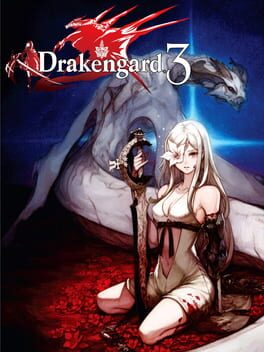504 Reviews liked by PostWar
Homefront
2011
Doom
1993
Halo 3
2007
And so, after never getting past that damn mission where you have to go save Cortana when I was a child, I've fully finished Halo 3. No surprise, it's fantastic.
Another strictly campaign review here
Halo 3 does a good job of bringing a modernized Halo 2 to the 7th gen, everything feels renovated though not innovated, which is a tad bit disappointing but it's the finale to a trilogy so what can you expect? I will say I think they should've expanded upon a lot of the ideas they were cooking with in Halo 2, such as the boss fights, those were neat.
weapons such as the pistol, shotgun, and battle rifle feel pretty damn nerfed and not as good as in the previous games, but with new abilities and weapons such as the gravity hammer, it's made up for.
Levels are pretty expertly crafted though some levels play it a bit too safe imo. The campaign is also quite short, so I'm wondering if there was some deadline crunch there honestly. Again I'm not saying these are bad missions some just lack unique ideas. The tank level on the ark is probably my favorite.
I'm a fan of the story and vibes though I would've liked to see a bit more personal story-telling, I think the chief staying a blank-slate works but I think the arbiter should've gotten more lines and just more to do in general, though it is a plus he is now player 2 in coop for immersion, rather than just two chiefs lol.
There's not much else to be said about Halo 3 that hasn't already been said, Halo 1-3 is just untouchable. I would say this is probably the weakest of the trilogy, but that's nothing negative, this is the best trilogy in gaming right here.
Another strictly campaign review here
Halo 3 does a good job of bringing a modernized Halo 2 to the 7th gen, everything feels renovated though not innovated, which is a tad bit disappointing but it's the finale to a trilogy so what can you expect? I will say I think they should've expanded upon a lot of the ideas they were cooking with in Halo 2, such as the boss fights, those were neat.
weapons such as the pistol, shotgun, and battle rifle feel pretty damn nerfed and not as good as in the previous games, but with new abilities and weapons such as the gravity hammer, it's made up for.
Levels are pretty expertly crafted though some levels play it a bit too safe imo. The campaign is also quite short, so I'm wondering if there was some deadline crunch there honestly. Again I'm not saying these are bad missions some just lack unique ideas. The tank level on the ark is probably my favorite.
I'm a fan of the story and vibes though I would've liked to see a bit more personal story-telling, I think the chief staying a blank-slate works but I think the arbiter should've gotten more lines and just more to do in general, though it is a plus he is now player 2 in coop for immersion, rather than just two chiefs lol.
There's not much else to be said about Halo 3 that hasn't already been said, Halo 1-3 is just untouchable. I would say this is probably the weakest of the trilogy, but that's nothing negative, this is the best trilogy in gaming right here.
Genetos
2009
Genetos
2009
ENG: It could remain a mere sample of the evolution of shmups over the years. And I guess it is... but it has that something that makes it special. And that's enough.
ESP: Podría quedarse en una mera muestra de la evolución de los shmups a lo largo de los años. Y supongo que lo es... pero tiene ese nosequé que lo hace especial. Y eso es suficiente.
ESP: Podría quedarse en una mera muestra de la evolución de los shmups a lo largo de los años. Y supongo que lo es... pero tiene ese nosequé que lo hace especial. Y eso es suficiente.
Genetos
2009
Radiant Silvergun
1998
The translation is out! Y'know, it really is a magical moment when a game like this finally gets a translation. A game that you love so dearly, one that you consider one of your favorites. Just seeing that opening cutscene with english subtitles, finally being able to understand the intricacies of what was going on. I got a little emotional!
Boku no Natsuyasumi 2, like the first one, is something of a masterpiece, and now is more accessible than ever before. Whoever you are, please play this game. It might just change your life.
Translation can be found here: https://www.patreon.com/posts/92070798
Boku no Natsuyasumi 2, like the first one, is something of a masterpiece, and now is more accessible than ever before. Whoever you are, please play this game. It might just change your life.
Translation can be found here: https://www.patreon.com/posts/92070798
Ikaruga
2001
"Reality has come in sight,
What did you see?
What did you hear?
What did you think?
What did you seek?
What did you do?"
Light and dark. Black and white. Left and right. On and off. Yin and Yang. 0 and 1. Almost anything in life can be reduced to a duality of opposites, and Ikaruga understands this not just from its famous polarity mechanic but the almost rhythmic flow of its level designs. Any shmup developer who's been there will tell you the importance of establishing a sense of flow to playing your game, and Ikaruga is the most striking example of this kind of design. Enemies will regularly be making you move to an invisible rhythm when playing Ikaruga, whether it be the starting enemies in stage 1 coming from the top-right/left corners of the screen, or the crushingly difficult "rose of madness" in the first half stage 4. Even the bosses embrace duality, such as the stage 1 boss shifting the polarity of its attacks between phases, the two-faced stage 2 boss which requires different polarities to take out each half, and the final boss' frenetic rush of overlapping bullet curtains.
This rhythm is amplified by the chaining system, which is much more proactive on the part of the player compared to Radiant Silvergun's one-colour restriction. Take out 3 enemies of the same colour in a row, regardless of which colour they are, and you'll add one chain to your current count. Each level and setpiece within is cleverly designed so that you can destroy every single enemy, including even extra enemies while not breaking your chain if you're good enough. Even though I'm not able to get S-ranks in any of the stages yet, pulling off the chains is very satisfying, with the maneuvers looking super cool when you time and position them just right. Ikaruga's chaining system feels more genuinely like building up a huge combo than any other shmup chaining system I've experienced, and gradually unraveling the chaining routes through each of the five stages is like peeling off the layers of an onion, giving the stages a new character and feel each time you get higher max chain counts.
A common criticism of Ikaruga is that the game is too slow-paced and "puzzle-like" for a shmup, especially in the first two stages, and frankly it's a criticism I agreed with for a long time, but this slowness withers away if you try chaining and get a greater feel for the polarity shifting. These slowly-scrolling setpieces become lightning fast, with you optimising frames in your movements even when going for A-ranks, let alone S-ranks. It helps that the ship movement speed in Ikaruga feels significantly faster than Radiant Silvergun's somewhat sluggish movement speed too.
You can't really talk about Ikaruga without bringing up its world-renowned presentational qualities. Although I like to avoid the rambling discourse over whether games are art or not, Ikaruga is definitely a game I'd consider to be oozing with artistic qualities. Speaking of art, this game is also blessed with some of the hardest going official artworks ever made, with a beautiful, grungy early 2000's cyberpunk anime kind of style. There's also the small but fantastic soundtrack by the director Hiroshi Iuchi, which while it doesn't quite reach the orchestral highs of Sakimoto's works for Radiant Silvergun, Iuchi's soundtrack perfectly matches the ebb-and-flows of the stages and bosses here, with a dramatic finish.
Admittedly Ikaruga can be a very difficult game to get into. It lacks the same immediate appeal of its predecessor, lacking the same scale in narrative, number of boss fights or even screen space taken by the game itself. The polarity mechanic is also even stranger than RS' 7-weapon system, with it feeling as though it's actively punishing conventional shmup gameplay patterns at points. Despite these idiosyncrasies of the game, for most of my time as a player of this genre, I've always respected Ikaruga, and as more time passes, I increasingly love it as well.
What did you see?
What did you hear?
What did you think?
What did you seek?
What did you do?"
Light and dark. Black and white. Left and right. On and off. Yin and Yang. 0 and 1. Almost anything in life can be reduced to a duality of opposites, and Ikaruga understands this not just from its famous polarity mechanic but the almost rhythmic flow of its level designs. Any shmup developer who's been there will tell you the importance of establishing a sense of flow to playing your game, and Ikaruga is the most striking example of this kind of design. Enemies will regularly be making you move to an invisible rhythm when playing Ikaruga, whether it be the starting enemies in stage 1 coming from the top-right/left corners of the screen, or the crushingly difficult "rose of madness" in the first half stage 4. Even the bosses embrace duality, such as the stage 1 boss shifting the polarity of its attacks between phases, the two-faced stage 2 boss which requires different polarities to take out each half, and the final boss' frenetic rush of overlapping bullet curtains.
This rhythm is amplified by the chaining system, which is much more proactive on the part of the player compared to Radiant Silvergun's one-colour restriction. Take out 3 enemies of the same colour in a row, regardless of which colour they are, and you'll add one chain to your current count. Each level and setpiece within is cleverly designed so that you can destroy every single enemy, including even extra enemies while not breaking your chain if you're good enough. Even though I'm not able to get S-ranks in any of the stages yet, pulling off the chains is very satisfying, with the maneuvers looking super cool when you time and position them just right. Ikaruga's chaining system feels more genuinely like building up a huge combo than any other shmup chaining system I've experienced, and gradually unraveling the chaining routes through each of the five stages is like peeling off the layers of an onion, giving the stages a new character and feel each time you get higher max chain counts.
A common criticism of Ikaruga is that the game is too slow-paced and "puzzle-like" for a shmup, especially in the first two stages, and frankly it's a criticism I agreed with for a long time, but this slowness withers away if you try chaining and get a greater feel for the polarity shifting. These slowly-scrolling setpieces become lightning fast, with you optimising frames in your movements even when going for A-ranks, let alone S-ranks. It helps that the ship movement speed in Ikaruga feels significantly faster than Radiant Silvergun's somewhat sluggish movement speed too.
You can't really talk about Ikaruga without bringing up its world-renowned presentational qualities. Although I like to avoid the rambling discourse over whether games are art or not, Ikaruga is definitely a game I'd consider to be oozing with artistic qualities. Speaking of art, this game is also blessed with some of the hardest going official artworks ever made, with a beautiful, grungy early 2000's cyberpunk anime kind of style. There's also the small but fantastic soundtrack by the director Hiroshi Iuchi, which while it doesn't quite reach the orchestral highs of Sakimoto's works for Radiant Silvergun, Iuchi's soundtrack perfectly matches the ebb-and-flows of the stages and bosses here, with a dramatic finish.
Admittedly Ikaruga can be a very difficult game to get into. It lacks the same immediate appeal of its predecessor, lacking the same scale in narrative, number of boss fights or even screen space taken by the game itself. The polarity mechanic is also even stranger than RS' 7-weapon system, with it feeling as though it's actively punishing conventional shmup gameplay patterns at points. Despite these idiosyncrasies of the game, for most of my time as a player of this genre, I've always respected Ikaruga, and as more time passes, I increasingly love it as well.
i like to keep this at the top of my steam wishlist, where it has sat for years and will persist for as long as this remnant lingers. if you can find the old prototype floating around out there like one of cayce's enigmatic and disjointed viral videos in w. gibson's pattern recognition (you totally can, it's not actually hidden or anything), you'll discover a piece of work abandoned (mostly) by its creator out of frustration with the linearity of its form as it took form (or so the paranarrative goes). it remains a compelling proof of concept nevertheless—an artifact of artefacts struggling to exist within the noise of the digital landscape.
Demonophobia
2008
Drakengard 3
2013
Drakengard 3
2013
Radiant Silvergun
1998
Shmups are games where you move around the screen and shoot at stuff. Shmups/STGs are often seen as an overly-simple, "disposable" genre among many in the gaming world. A relic of a bygone era where games were confined to "simple" genres, where games were fated to be nothing but "quarter munchers", unlike the "enlightened" AAA Everything-Game Life Simulators of today.
Radiant Silvergun heroically rejects this notion, introducing gameplay mechanics that are inherently and obviously deep, engaging and complex even to complete newcomers to the genre, while still capturing the raw appeal of intense shmup gameplay for those experienced in the genre. Not just that, Radiant Silvergun is a game that asks a lot of the player, perhaps even more than its successor Ikaruga. There are 7 weapons in your arsenal, more than any other shmup I know of. And all of them have their situational advantages and disadvantages that you must become familiar with in order to progress. In order to stand a reasonable chance against this game's many, many bosses, you must level up your A, B and C weapon categories, and to level up your weapons you must chain and go for full boss destructions, and collect secret Merry dogs, because simply put, your score is your experience points.
No particular part of this game is really all that hard in isolation, at least on normal difficulty, but it's the process of putting it all together, chaining through each section just like how Treasure wanted you to, not just destroying but dominating the bosses, utilising and leveling your weapons in perfect harmony, and accounting for every single hazard and niche interaction that might get you killed. If you show that you have what this game asks of you, it's an extremely rewarding and satisfying experience, a feeling that is boosted further by Radiant Silvergun's excellent presentation, the bloodrush "Treasure pacing" I love which just constantly throws new boss fights and setpieces at you every minute, and riveting story with existential themes.
I also wanna shout out Radiant Silvergun's story mode as well. It's such a clever use of the game's weapon levelling mechanic and is an excellent compromise between a "pure" 1cc and carelessly credit feeding through a shmup, which many other shmups suffer from in terms of their popular reception of being "quarter munchers". You must 1cc story mode in order to clear, but you can save your weapon progress and earn extra starting lives between runs, basically gradually rigging the game further and further in your favour that just about any player can win with enough dedication. But here's the kicker - even with those extra level ups and lives, you still have to learn the game, and take the stages and bosses seriously. This is one of the main things that makes non-shmup players more aligned to this game, and RS' story mode is absolutely something every other shmup developer should be looking towards for inspiration.
Radiant Silvergun is a real videogame, shooting at the soul of man with guns of silver.
Radiant Silvergun heroically rejects this notion, introducing gameplay mechanics that are inherently and obviously deep, engaging and complex even to complete newcomers to the genre, while still capturing the raw appeal of intense shmup gameplay for those experienced in the genre. Not just that, Radiant Silvergun is a game that asks a lot of the player, perhaps even more than its successor Ikaruga. There are 7 weapons in your arsenal, more than any other shmup I know of. And all of them have their situational advantages and disadvantages that you must become familiar with in order to progress. In order to stand a reasonable chance against this game's many, many bosses, you must level up your A, B and C weapon categories, and to level up your weapons you must chain and go for full boss destructions, and collect secret Merry dogs, because simply put, your score is your experience points.
No particular part of this game is really all that hard in isolation, at least on normal difficulty, but it's the process of putting it all together, chaining through each section just like how Treasure wanted you to, not just destroying but dominating the bosses, utilising and leveling your weapons in perfect harmony, and accounting for every single hazard and niche interaction that might get you killed. If you show that you have what this game asks of you, it's an extremely rewarding and satisfying experience, a feeling that is boosted further by Radiant Silvergun's excellent presentation, the bloodrush "Treasure pacing" I love which just constantly throws new boss fights and setpieces at you every minute, and riveting story with existential themes.
I also wanna shout out Radiant Silvergun's story mode as well. It's such a clever use of the game's weapon levelling mechanic and is an excellent compromise between a "pure" 1cc and carelessly credit feeding through a shmup, which many other shmups suffer from in terms of their popular reception of being "quarter munchers". You must 1cc story mode in order to clear, but you can save your weapon progress and earn extra starting lives between runs, basically gradually rigging the game further and further in your favour that just about any player can win with enough dedication. But here's the kicker - even with those extra level ups and lives, you still have to learn the game, and take the stages and bosses seriously. This is one of the main things that makes non-shmup players more aligned to this game, and RS' story mode is absolutely something every other shmup developer should be looking towards for inspiration.
Radiant Silvergun is a real videogame, shooting at the soul of man with guns of silver.



